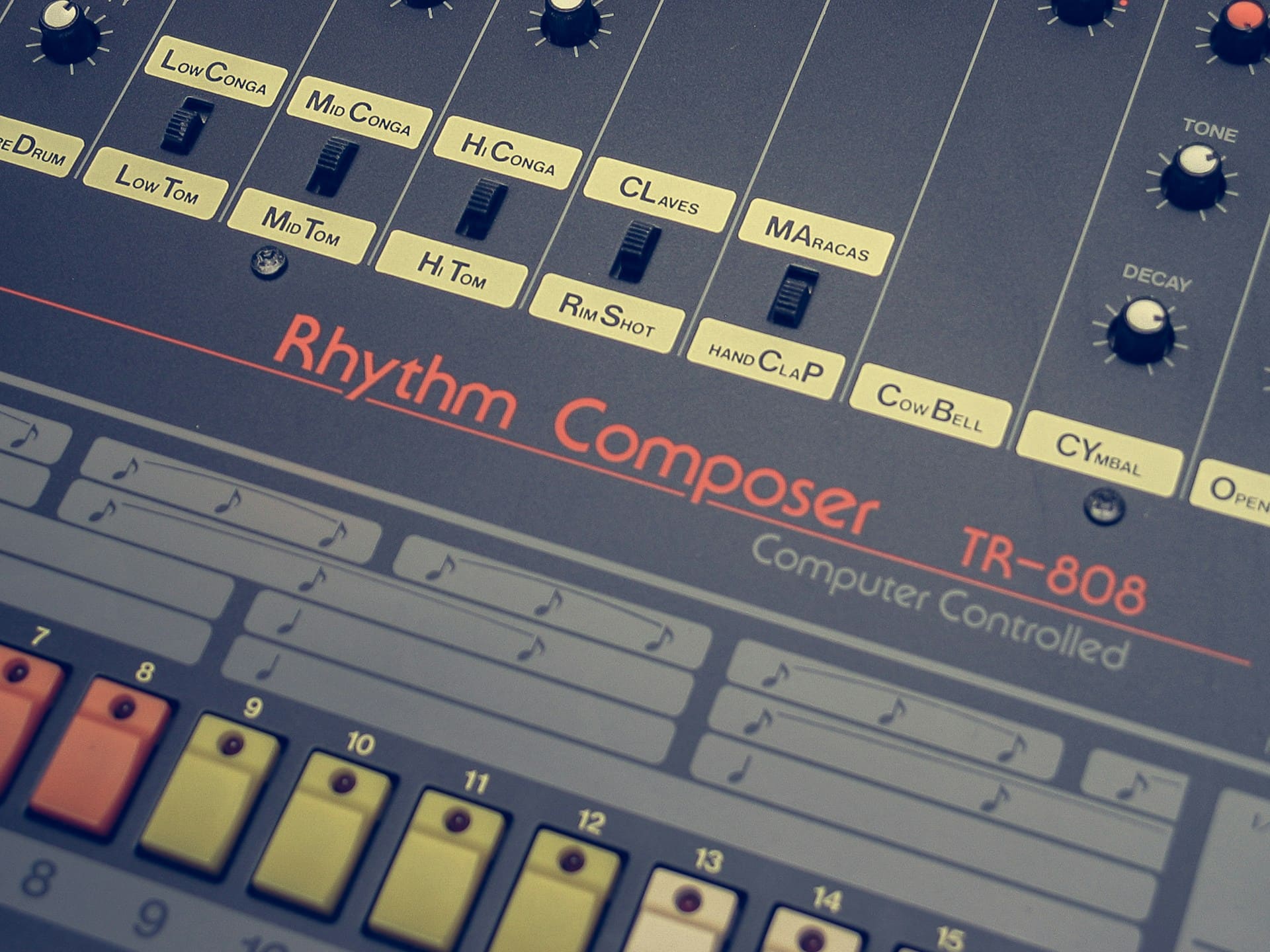
Before laptops, plugins, and drag-and-drop loops, there was the Roland TR-808 Rhythm Composer. Released in 1980 and discontinued just three years later, the 808 was initially considered a failure. But decades on, its unmistakable sound has become foundational to everything from techno and hip-hop to pop, ambient, and experimental electronica.
For anyone new to electronic production or simply curious about the tools behind the beats, here’s a clear and concise introduction to the Roland 808: what it is, why it matters, and how to start using its legacy in your own music.
What Is the Roland TR-808?
The TR-808 is an analog drum machine developed by Roland. It produces drum sounds using synthesized waveforms, not samples. That means its kicks, snares, hi-hats, and claps don’t try to mimic real drums—they create something altogether new.
Core Specs:
- Released: 1980
- Sounds: Kick, snare, toms, rimshot, hi-hats, cymbal, cowbell, clap, claves
- Sequencer: 16-step programmable
- Outputs: Individual outs for each sound, plus MIDI and sync (in later mods)
Why It Was (Almost) a Failure
When the 808 launched, it was too synthetic for the mainstream. Producers were expecting realism, and the 808 delivered machine-like percussion with strange tonalities and long decay tails. It was quickly pulled from shelves.
But that rejection opened the door for underground artists. Electro, hip-hop, and techno producers picked up secondhand 808s for cheap and embraced the very qualities others dismissed—punchy, robotic, alien.
Why It Became Iconic
The 808 didn’t just age well—it rewired the DNA of modern music. Its kick drum, deep and subby, became the heart of southern hip-hop and trap. Its snare and clap sounds shaped early house and electro. Artists and genres that helped define its status include:
- Afrika Bambaataa – Planet Rock
- Marvin Gaye – Sexual Healing
- Cybotron, Juan Atkins, Drexciya – Detroit techno
- Aphex Twin, Autechre, Boards of Canada – IDM and ambient
- Kanye West, OutKast, Beyoncé – Hip-hop and pop
The 808 Sound: A Breakdown
Each 808 drum sound is unique, but here are a few that defined its legend:
- Kick Drum – Booming and sub-heavy. Unlike modern kicks, it decays like a sine wave and can hold a tone, making it both rhythmic and melodic.
- Snare Drum – Metallic and noisy, layered with a subtle body tone. Great for layering or using dry for a more industrial sound.
- Hi-Hats – Thin and crisp, ideal for fast, skittering patterns.
- Clap – Dry and synthetic, often used in house and techno to give presence and groove.
- Cowbell – Piercing and tonal. A favorite of early electro and funk.
- Toms and Congas – Tunable, punchy, with a rubbery resonance—perfect for fills or tribal textures.
Using the 808 Today: Hardware vs. Software
You don’t need to spend thousands to get the 808 vibe. Options include:
Hardware Reissues:
- Roland TR-08 (Boutique series)
- Behringer RD-8 (affordable clone with modern features)
- Roland TR-8S (modern hybrid drum machine with 808 sounds and more)
Software Emulations:
- Roland Cloud TR-808 plugin – Official and accurate
- Samples From Mars – 808 From Mars – Sample packs recorded through analog gear
- D16 Nepheton – Popular virtual instrument inspired by the 808
- Ableton’s Drum Rack 808 Kits – Great for building sequences inside Live
How to Start Making Beats Like the 808 Era
- Start simple – Program a 4-on-the-floor kick, snare on the 2 and 4, and closed hats on 8ths. This is the DNA of house and techno.
- Experiment with decay and tone – The real power of the 808 is how tunable and flexible it is. Adjust kick length, pitch toms melodically.
- Don’t over-layer – The 808 is minimal by nature. Let the space between hits carry the groove.
- Use swing and accents – Push/pull your beats to make them feel human, even when they’re robotic.
- Treat your sounds – Saturation, compression, and analog-style effects can breathe life into even clean digital 808 samples.
Final Thoughts
The Roland TR-808 was never meant to be timeless—it simply refused to disappear. What started as a commercial misfire became the heartbeat of underground innovation and then mainstream dominance. For electronic musicians today, understanding the 808 is like learning the fundamentals of architecture. Once you know the frame, you can build anything.
Whether you’re crafting Detroit-style techno, lo-fi ambient, or new-school trap, the 808 remains a weapon—simple, powerful, and always relevant.
By Jenue,
writer and curator at Electronica Site, tracing the quiet pulse of modern electronic sound.

Questions, collabs, or just vibes? Hit us up
email: nica@electronica.site